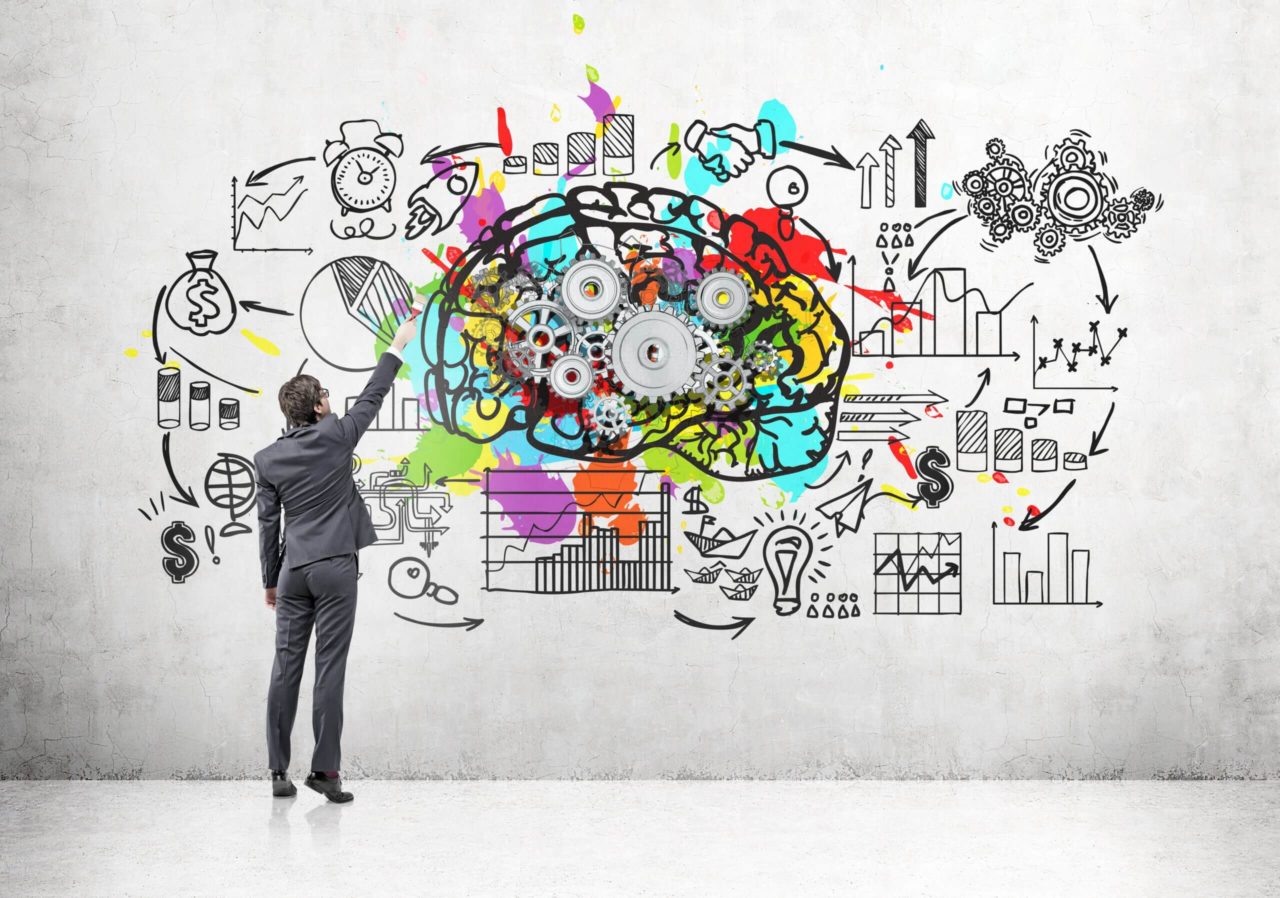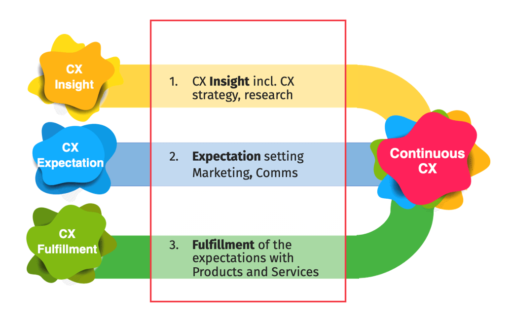CX in a Rapidly Changing World

Key takeaways
- Brand loyalty is being attacked on many fronts. On the demand side, changing consumer behavior and a strong appreciation of togetherness have created new criteria. On the supply-side, disruptions have pushed customers to venture outside their comfort zones. Whether these pose a threat or opportunity to your business, your CX strategy should reflect these changes.
- The shelf-life of data is short, and it just got shorter. How do you make data work for you when your historical data is worthless, your processes are built around the old reality, and the new customer expectation is that you react with speed and agility? We’d recommend assessment with the Avalon CX Double Diamond model or similar.
- Future-proofing your data becomes essential. In a predictable world, you optimize. In an unpredictable world, you prepare. Preparing scenarios and looking at them from different customer perspectives helps reveal the risks and strengths of different paths.
Introduction
COVID-19 has fundamentally changed the way we interact with each other. Some of the changes are temporary, partially, we have learned a new way of living, and some behaviors may fluctuate between the old new realities. Customer Experience (CX) will change on multiple levels too.
- Customers have different priorities, behaviors, and even their comfort zone has changed. We can’t rely on old data or experience to tell us what the customers expect today. We need to be humble and admit we don’t know – to the extent we’d like to – what our customers value today.
- If ‘knowing your customer’ or ‘being customer-centric is your priority and you agree there’s a real possibility you don’t know enough, it’s time to act. There’s a second level of unknown, though. Resetting a baseline and forming a picture of customer expectations isn’t enough. Besides not knowing where the customers are, we don’t know where they’re headed. What behaviors will bounce back? What changes are here to stay? What changes will follow the current changes?
- Most professionals feel a level of discomfort with the double-blind situation: not knowing where the customers’ minds are, nor being able to predict where they’re headed. The third level is not knowing how to address the situation. Customer Experience has become data-driven, analytical, and even automated. Data is a beautiful foundation to build on, but a lack of data can be paralyzing. Knowing when not to trust your data, generating rapid insights, and future-proofing your plans for different scenarios have become crucial.
This White Paper draws from the experiences of past CX disruptions and draws parallels to the post-COVID-19 world. It suggests best practices on how to become data-driven and how to use the crisis to take down organizational boundaries.
Methodology
The hypothesis behind this white paper is that COVID-19 has been a once-in-a-generation experience that fundamentally disrupts the CX expectations. There are disruptions with repeating occurrences like wars and recessions. Some disruptions are gradual, like some technology shifts. There are disruptions that only impact a part of the customer base. COVID-19 is unlike any of these. It’s a global, society-changing event that has no parallel to the modern era.
We use publicly available data about changes in consumer behavior, economic impact, and behavioral changes, fully acknowledging the differences we’ve seen so far may not be representative of the future. Secondly, we draw parallels from our, our partners’, and customers’ experiences during unexpected (reactive) disruptions and intentional (proactive) disruptions.
We are concluding from the changes observed and expected in this crisis and drawing parallels from past disruptions. We present recommendations and best practices.
Key findings
Brand loyalty is being attacked on many fronts
Customers are scrutinizing brands. The ones that are out to exploit for profit are not being tolerated. As people pull together during a crisis, they expect the same from their brands of choice.
COVID-19 has rewritten our social and work calendars. As our behavior changed, so did our consumption, and what once made a brand our darling may not seem as appealing anymore.
Supply-side shock affects brands too. For example, a local outlet may no longer be along a commuter route. As a result, various parts of their supply chain got (and will get) hit at different times resulting in unreliable availability.
For established brands, this calls for a new plan on how to stay relevant and in touch with existing customers. For challengers, this is an opportunity to disrupt and win the hearts and minds of customers.
The shelf life of data is short and just got shorter
Data helps you make better decisions, and for most, once you’ve learned to rely on data, you soon introduce automation. Things work smoothly until they don’t. Overnight, much of what you knew becomes incorrect and dangerous.
The natural reaction is to ditch the data and start acting based on experience. This may work out as a first response. We’ve entered an era of uncertainty, but data hasn’t lost its value. It just needs to be worked differently.
Companies should take a critical look at the core assumptions their business is built on. Secondly, assessing their agility to react to changes and comparing that to data collection, processing, and decision-making ability may be revealing.
In many cases, companies lack both the historical data and the means to collect the necessary data to make rapid decisions.
Future-proofing your CX becomes essential
While you work on the everyday challenges of the supply chain, and brand relevance and build your capacity to make the right decisions based on relevant data, we suggest you start hedging your plans.
Hedging doesn’t mean being indecisive or lacking vision. Preparing for many possible scenarios and picking a plan that plays well in several likely outcomes is a business reality in the post-COVID-19 world.
Preparing scenarios and looking at them from different customer perspectives helps reveal the risks and strengths of different paths. We’d recommend a holistic view covering CX strategy, expectation setting by marketing communications, and how those expectations are fulfilled by the company offering.
Future-proofing plans have become more complicated, however, more critical than ever.
Practical solutions
- Still, a few months ago, companies could be categorized based on their distance to disruption.
- Proactive organizations seek to disrupt industries, customer expectations, and even norms.
- The actions of the proactive ones put a majority of organizations into a reactive mode.
Reactive companies can still be prepared. They can assume a disruption will hit them sooner or later and have the resources to fight back and adapt. Many successful companies have chosen a less aggressive pace of change and focus on succeeding with other means than proactive disruption.
Reactive laggards are the ones struggling to adapt to change. They may succeed very well in the status quo but are vulnerable to the inevitable change. The crisis may be just the wake-up call they need to shake them from the dormant stage.
COVID-19 pushed practically every organization to a state of disruption. Proactive ones are well prepared as they thrive during change. The main challenge many companies are facing is how to find the time and resources to grasp all the opportunities. As we mentioned earlier, it’s crucial not to be seen to be exploiting the crisis but instead acting responsibly. Reactive companies expecting some sort of disruption are finding their preparedness is paying off as they didn’t need much help in implementing the necessary changes. Finally, the reactive laggards plunge into a crisis. They lack the skills and resources to adapt; even more crucially, they probably lack the vision and strategy to cope with change.
At the time of crisis, cash is king, and customers are the ones that control your inbound cash flow. It’s no secret that CX leaders enjoy higher sales, lower costs, and higher employee satisfaction than other companies. Starting to plan the change from what your CUSTOMER wants is a solid starting point.
Most businesses claim to serve their customers first. Still, in reality, they answer to shareholders, and board members, operate in siloes, and primarily serve their inter-departmental goals, which don’t necessarily roll up to customers’ needs. If you genuinely embrace delighting the customer, you need to have teams working together. This calls for shared business objectives and shared insights. Insights and data are always useful, but even more so at the time of disruption. Whatever you knew half a year ago, is most likely outdated. You’ll need a way to measure changing customer expectations near real-time and the ability to measure the impact of the changes you make. Does the customer benefit from multiple, separated insight processes that are run as projects and have gaps between them? Of course not. If you want to become customer-centric, start moving towards a continuous, integrated insight process.
Improving Customer Experience has a proven, demonstrable positive payback. The challenge is that the costs and resource requirements happen today. The results, on the other hand, may only become visible days, weeks, or months later. There are a few ways you can address this. The first one is expectation management. When you start CX improvement actions, keep the stakeholders informed and agree in advance on what you measure, when, and what outcomes you expect. Second, split the work into smaller sub-projects. Showing early wins, however small, creates confidence and wins nods of approval. Third, plan your CX steps so that you can measure them in real time. This gives you the flexibility to adapt while you execute. You can make brave moves, learn from the steps that don’t work, and ultimately find the right choices faster.
Avalon CX provides a free model for assessing CX core activities and methodology. There are many other models around with varying levels of comprehensiveness and complexity, and we advise choosing the one you feel comfortable with. We observe CX through three core elements: CX Insights, CX Expectations, and CX Fulfilment. CX Insights involves target setting, strategy, and research. Insights and analytics are shared across the other two areas. Marketing and communications define and build brands and always shape a customer’s expectation of their experience with the brand, aka CX Expectations. The third element is CX Fulfillment which comes in the form of products, services, solutions, and customer support.
Bringing all three core elements together to an integrated, continuous CX should be your goal. While the concept is intuitive and straightforward, implementing it is in no way trivial. It usually requires several rounds of iteration and interim wins that encourage participation across the organization. CX Expectation and Fulfillment can be a timely activity, splitting design and development activities. These activities can loop, run in parallel, or be one-off projects depending on the nature of your business. The important thing is that there’s a CX Methodology that can address each activity.
You’re not alone in this challenge, and the outcome is better for the customer, the employees, and the business.

Conclusions
COVID-19 has resulted in an unprecedented shock to our society, and the landscape of Customer Expectations is changing rapidly. Many companies struggle to adapt to the changes. Some are struggling to adapt to survive; some are at risk of missing out on opportunities. This study found three common key takeaways and suggests a method for addressing them, reactively or proactively.
What is Customer Experience?
CX encompasses all the interactions a person has with your brand. It starts with what HAPPENS to a customer during any interaction with your company, followed by how it makes the customer FEEL. It all culminates in what customers DO as a consequence of the experience.
Customer Experience can be studied from 3 perspectives: CX Insights covering business objectives, strategy, analysis, and data; CX Expectation setting by marketing and communications; and CX Fulfillment delivered by the products and services. These three core elements form CX, and to optimally serve the customer, they should create one integrated and continuous process.
Excellent CX means your customer’s experience and expectations match through all touchpoints.
Practical Solutions
CX leaders outperform their laggard competitors in profitability, employee satisfaction, and valuation. COVID-19 has thrown virtually every organization into a state of disruption. Whether you were earlier proactively disrupting the market or taking a more cautious approach, now is the time to act. Cash is king, and customers control your cash inflow. Every organization can benefit from implementing a data-driven, continuous CX plan. We’d recommend starting now, setting measurable targets, and growing the ambition as the positive results give you more confidence.
To order this White Paper as a PDF or for any other requests, please let us know.
